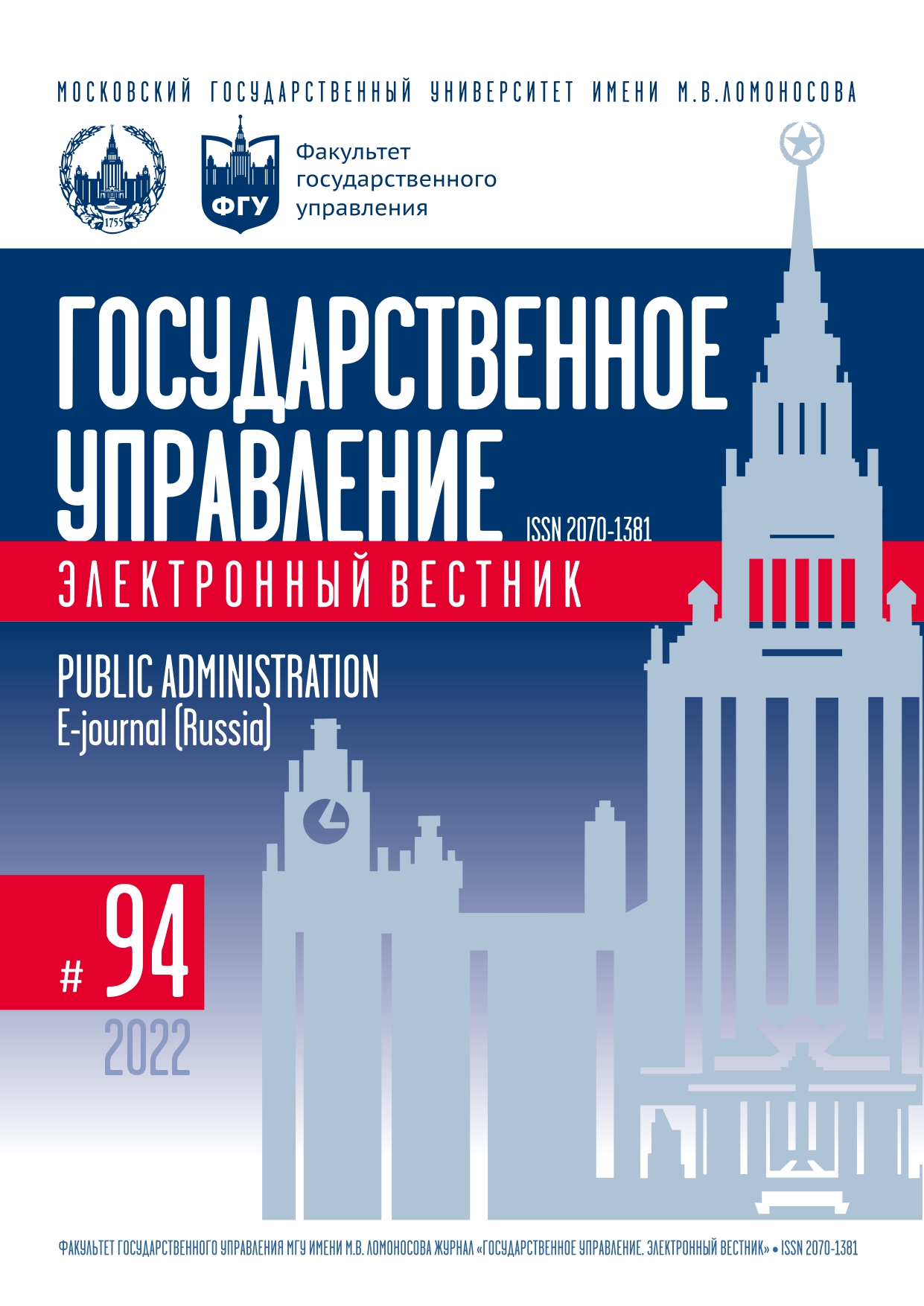Agent-Based Demographic Model of the Far East as a Tool to Support Management Decision Making
Keywords:
Agent-based modeling, artificial society, strategic planning, demographic forecast, regional management, Far EastAbstract
Scientific validity is one of the key requirements for strategic planning documents, enshrined at the level of federal legislation. Ensuring scientific validity requires the development and implementation of special tools in the system of state and municipal government that can provide decision makers with both information about the current state of the control object and scenario forecasts for its development, taking into account various options for managerial impacts. The choice of forecasting tools is not regulated by law and is carried out by the authorities independently, which leads to inconsistency in forecasts of various levels and casts doubt on the achievability of target indicators. The use of agent-based models as a decision support tool makes it possible to test management decisions on an artificial society and forecast socio-economic dynamics in a comprehensive manner, simultaneously at all levels of management: from an individual to a region, district, country. The purpose of this article is to characterize the functionality of the agent-based demographic model of the Far East, developed at the Federal Autonomous Scientific Institution “Eastern State Planning Center”, for use by governments at various levels. To achieve this purpose, the article reveals the conceptual scheme of the agent-based model, describes the features of its software implementation, substantiates exogenously controlled parameters and presents the corresponding interactive controls that form the user interface of the model. The simulation results can be used in the preparation of strategic planning documents and regional development programs, in particular to develop a forecast of the population of the region, a forecast of the balance of labor resources, a forecast of socio-economic development, planning activities to create jobs and other activities of state and regional programs to promote employment. This tool can be used as well to conduct scenario experiments and substantiate the economic efficiency of the regulatory impact.
References
Кириенко В.Е. Вызовы и возможности при создании и применении систем поддержки принятия решений // Проблемы управления в социальных системах. 2013. Т. 6. № 9. С. 6-16.
Лычкина Н.Н. Имитационное моделирование стратегического развития социально-экономических систем: поиск эффективных модельных конструкций // Труды Седьмой Всероссийской научно-практической конференции «Имитационное моделирование. Теория и практика» (ИММОД-2015). М.: [б.и.], 2015. Т. 2. С. 168–173.
Макаров В.Л., Бахтизин А.Р., Сушко Е.Д. Агент-ориентированные модели как инструмент апробации управленческих решений // Управленческое консультирование. 2016. № 12. C. 16–25.
Россошанская Е.А. Возможности и перспективы применения агент-ориентированных моделей в управлении воспроизводством трудового потенциала на муниципальном уровне // Государственное управление. Электронный вестник. 2019. № 73. С. 249–266. DOI: 10.24411/2070-1381-2019-00039
Чекмарева Е.А. Агент-ориентированные модели в муниципальном управлении // Проблемы развития территории. 2017. № 6(92). С. 121-135.
Axtell R. Why Agents? On the Varied Motivations for Agent Computing in the Social Sciences // Center on Social and Economic Dynamics (CSED). 2000. Working Paper No. 17. URL: https://www.researchgate.net/publication/228718823_Why_Agents_On_the_Varied_Motivations_
for_Agent_Computing_in_the_Social_Sciences
Bonabeau E. Agent-Based Modeling: Methods and Techniques for Simulating Human Systems // PNAS. 2002. Vol. 99. Is. suppl_3. P. 7280–7287. DOI: 10.1073/pnas.082080899
Chesney T., Gold S., Trautrims A. Agent Based Modelling as a Decision Support System for Shadow Accounting // Decision Support Systems. 2017. Vol. 95. P. 110–116. DOI: 10.1016/j.dss.2017.01.004
Furtado B.A. Eberhardt I.D.R. A Simple Agent-Based Spatial Model of the Economy: Tools for Policy // Journal of Artificial Societies and Social Simulation. 2016. Vol. 19. Is. 4. DOI: 10.18564/jasss.3071
Matsatsinis N.F., Delias P. Implementing an Agent-based Decision Support System for Task Allocation: A Multi-Criteria Approach // Proceedings of the 9th Panhellenic Conference in Informatics — PCI 2003 (Thessaloniki, November 21–23, 2003). Berlin: Springer, 2003. P. 128–141.
Quindt J., Reetz E., Kukuck V., Tönjes R., Westerkamp C. Agent Based Decision Support System for Optimizing Logistical Processes in Agricultural Production // 9th IEEE International Conference on Industrial Informatics. Lisbon: IEEE, 2011. P. 27–32. DOI: 10.1109/INDIN.2011.6034831
Salem H., Attiya G., El-Fishawy N. A Survey of Multi-Agent based Intelligent Decision Support System for Medical Classification Problems // International Journal of Computer Applications. 2015. Vol. 123. Is. 10. P. 20–25.
Turban E., Aronson J.E., Liang T-P. Decision Support Systems and Intelligent Systems. Upper Saddle River, N.J.: Prentice Hall, 1998.
Yu Zh., Rouse W., Serban N., Veral E. A Data-Rich Agent-Based Decision Support Model for Hospital Consolidation // Journal of Enterprise Transformation. 2016. Vol. 6. Is. 3–4. P. 136–161. DOI: 10.1080/19488289.2016.1248802
Zeebaree M., Aqel M. A Comparison Study between Intelligent Decision Support Systems and Decision Support Systems // The ISC Int’l Journal of Information Security. 2019. Vol. 11. Is. 3. P. 187–194. DOI: 10.22042/isecure.2019.11.3.25

